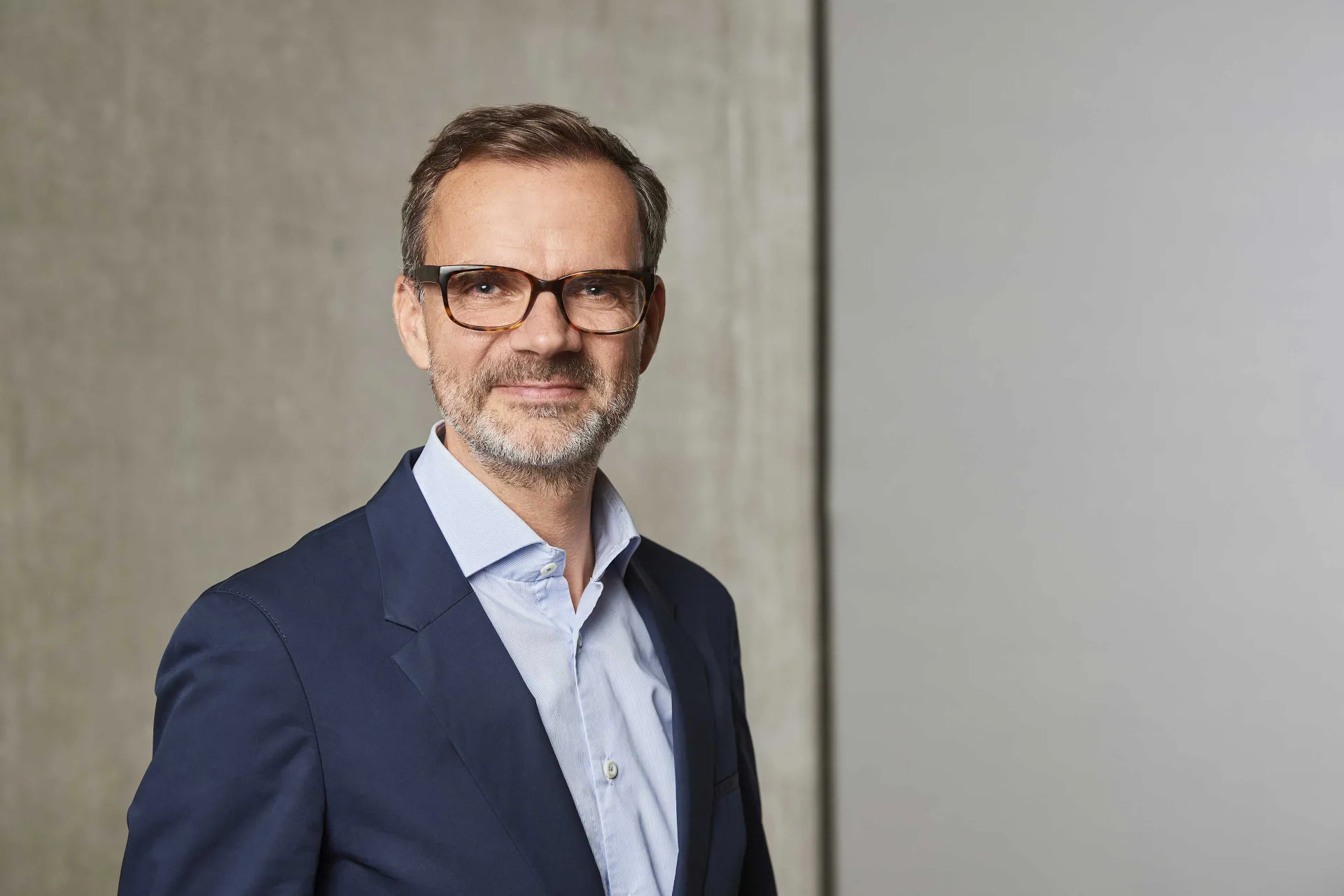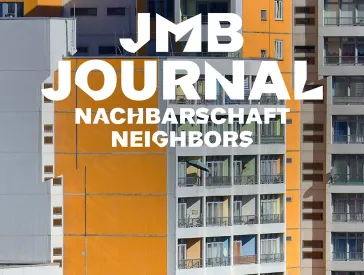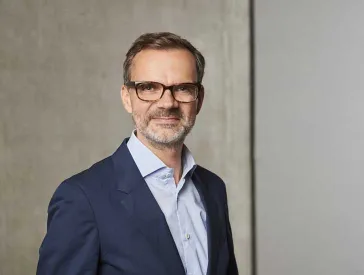Innovations
An Interview with Lars Bahners

Lars Bahners; Jewish Museum Berlin, photo: Yves Sucksdorff.
Lars Bahners is Managing Director of the Jewish Museum Berlin Foundation. As a lawyer, he previously worked for more than twenty years in management positions at the Stiftung Preußische Schlösser und Gärten Berlin-Brandenburg, Berlin’s cultural administration and the Stiftung Deutsches Hygiene Museum in Dresden.
Mr. Bahners, you’ve served as Managing Director of the Jewish Museum Berlin since December 1, 2022. What were you looking forward to the most about your new position?
It’s been a great privilege to work for one of the most renowned Jewish museums in Europe. I was especially looking forward to the work with my many new colleagues, some of whom have been with the JMB from the start. After my first few months on the job, it turned out that all my expectations were justified!
Is there anything you didn’t anticipate?
The beautiful view from my office window. The Libeskind building looks very closed from the outside, but from my office on the top floor, I have a wonderful view of the surrounding area, which I didn’t expect.
You’ve been responsible for managing several different museums. What’s it like to work behind the scenes of the exhibitions and programs?
Cultural institutions and museums in particular are complex social systems that perform a variety of tasks with sometimes contradictory goals. At the same time, they’re research and collecting institutions, educational facilities, tourist attractions, architectural monuments, and spaces for discourse, leisure activities, and relaxation. Museum management involves maintaining the proper balance between all these functions and goals and mediating between diverging interests.
Can you give us an example?
One ongoing challenge is how to deal with limited or declining resources at a time when the demands on museum capabilities
are growing. That’s why management is increasingly focusing on directing and conserving resources. Yes, let me give you an example: in order to preserve and store objects, we have to ensure proper conservation conditions, which are often quite different from the conditions museum goers expect for a pleasant, entertaining visit. We also need to consider factors relating to sustainability and energy conservation. Here managers must use architectural resources to ensure that all of the museum’s functions are successfully fulfilled despite their complexity.
When you began your work, you emphasized your commitment to continued managerial excellence at the JMB. How would you define that?
Museums face growing social, economic, and political challenges. To meet them, they require program and organizational innovations.
In my opinion, these innovations need to be developed collaboratively within the museum. Management traditionally supports orga- nizational units by providing effective, legally compliant structures. The specialized departments are usually thought of as performing
purely supportive functions, but I believe management can achieve more than this. It shouldn’t be consulted
only at the end of the process. It should be involved in problem-solving and innovating all along in order to be better integrated into the complexity and contingencies of the organization.
What does it take to be innovative?
I think that any kind of innovation requires people who constantly question themselves and their own actions. Only then can you establish a collaborative perspective on tasks and goals and develop new forms of cooperation and decision-making. I enjoy not only drawing up balanced financial plans, but also thinking about how to implement and monitor them. The organization and staff should work together with shared responsibilities to achieve the balance I mentioned earlier. Helping build the necessary structures and empower staff is a great source of inspiration for me.
What role does the digitization of work and work methods play?
Three years ago, when we faced our first lockdown, we wondered how we would be able to stay in touch. Today, I have real-life, virtual, and hybrid meetings listed side by side in my calendar. The methods by which wework, communicate, and collaborate have changed. We’ve been forced to find digital solutions relatively quickly. Our social relationships and structures have also changed. In order to confront these changes constructively, establish new structures over the long term, and design a comprehensive digital transformation, we need financial and human resources, expanded IT infrastructure, and knowledge of new branches of law. For management teams, this means becoming familiar with new areas of expertise, which I enjoy and approach with great curiosity.
What are your favorite apps?
I particularly like community-based apps. One advantage of the digital transformation is that a wide variety of data comes together, fed by participatory user behavior and constantly optimized. There’s one app I particularly enjoy that allows you to view hiking and biking routes and plan and upload excursions.
Do you have a favorite walk or bike ride in this part of the city?
I was actually very happy to be spending more time in Kreuzberg. I moved to Berlin in 1998 and had my first apartment near the Viktoriapark. Back then, I got to know Kreuzberg and Berlin mainly by bike. The Libeskind building opened a short time later. Today there’s a vibrant new architecture around Fromet-und-Moses-Mendelssohn-Platz, which I really like. And I still enjoy exploring the area by bike!
Which museums do you find especially appealing?
The nice thing about Berlin’s museums is their great diversity. In addition to the larger museums, which are world-class institutions and popular tourist attractions, I’ve really come to appreciate the smaller ones, particularly through my work at Berlin’s Department of Cultural Affairs. Many museums do high-quality, professional work despite very limited resources. Personally, I’m always attracted to cultural sites that combine art, nature, and architecture—for example, the Georg Kolbe Museum or the Brücke Museum.
What are your hopes for the museum of the future?
Most of all, I want museums to remain relevant to society! In my opinion, the museum of the future will be more accessible, reach a broader public, and work with new forms of education and communication. I also envision a museum that is diverse in terms of staff, operates virtually and physically, and takes responsibility for all of society.
The interview was conducted by Toni Wagner.
Citation recommendation:
Toni Wagner (2023), Innovations. An Interview with Lars Bahners.
URL: www.jmberlin.de/en/node/10050


